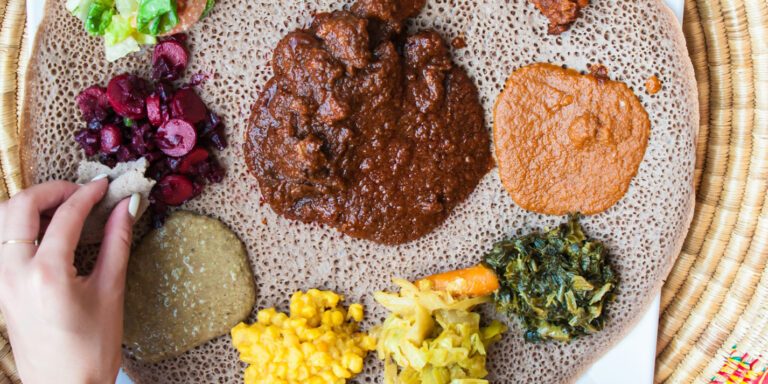Introduction: Burundian cuisine in a nutshell
Burundian cuisine is a reflection of the country’s geographical location, history, and cultural influences. The cuisine’s mainstay is a combination of fresh vegetables, legumes, grains, and meat, flavored with a mix of locally-grown herbs and spices. The cuisine is characterized by its simplicity and naturalness, with most dishes being prepared from scratch and using little to no processed ingredients.
Burundian cuisine also takes inspiration from neighboring cuisines like Rwandan, Congolese, and Tanzanian. The cuisine is often served with a side of plantains, cassava, or sorghum flatbreads, and eaten with bare hands, following traditions that are deeply rooted in the country’s culture.
Staple foods: What Burundians eat on a daily basis
Staple foods in Burundi include plantains, cassava, sweet potatoes, beans, rice, and maize. These foods are often served with a side of leafy green vegetables like spinach or amaranth, and a peanut sauce or tomato-based stew. Ugali, a thick porridge made from cassava or maize flour, is also a popular staple food in Burundi.
Ubiquitous ingredients: Common spices and condiments
Common spices and condiments used in Burundian cuisine include garlic, ginger, cumin, coriander, and turmeric. Fresh herbs like thyme, parsley, and cilantro are also used to add flavor to dishes. The cuisine is often spiced with chili peppers or pili pili, a fiery African pepper that adds heat to dishes.
Meat dishes: Popular recipes featuring beef and goat
Beef and goat are the most common meats used in Burundian cuisine. Popular meat dishes include grilled skewers of beef or goat, served with a side of plantains and a peanut sauce. Another popular dish is Nyama Choma, which is roasted goat meat served with a side of steamed vegetables and Ugali.
Fish dishes: How Burundians cook fresh fish from Lake Tanganyika
Fresh fish from Lake Tanganyika is a staple in Burundian cuisine, and fish dishes are typically cooked with tomatoes, onions, and garlic. One popular fish dish is Mukeke, which is a grilled Tilapia, served with a side of cassava leaves and Ugali. Another favorite is Isambaza, a small sardine-like fish that is fried and served with a side of hot chili peppers.
Vegetarian options: Delicious meals without meat
Vegetarian options in Burundian cuisine include dishes like Imvange, a peanut stew made with eggplant, tomatoes, and onions. Another popular dish is Beans and Rice, which is a simple and hearty combination of beans and rice, flavored with a mix of spices and herbs.
Snacks and street food: Must-try nibbles on the go
Street food is a popular and affordable option in Burundi, with vendors selling snacks like Mandazi, a sweet fried doughnut, and Sambusa, a savory pastry filled with spiced meat or vegetables. Other popular snacks include roasted peanuts, roasted maize, and grilled plantain.
Drinks: Traditional beverages that accompany Burundian food
Traditional beverages in Burundian cuisine include Urwarwa, a fermented banana beer, and Ikivuguto, a fermented milk beverage. Burundians also enjoy tea and coffee, which are typically served with a side of roasted plantains or cassava.

